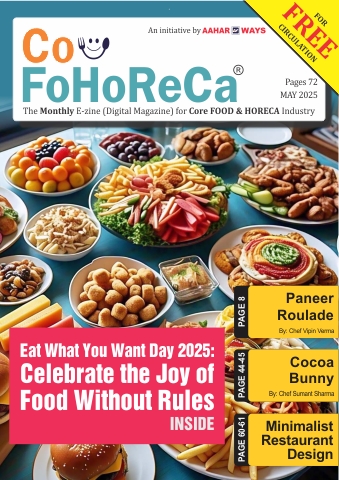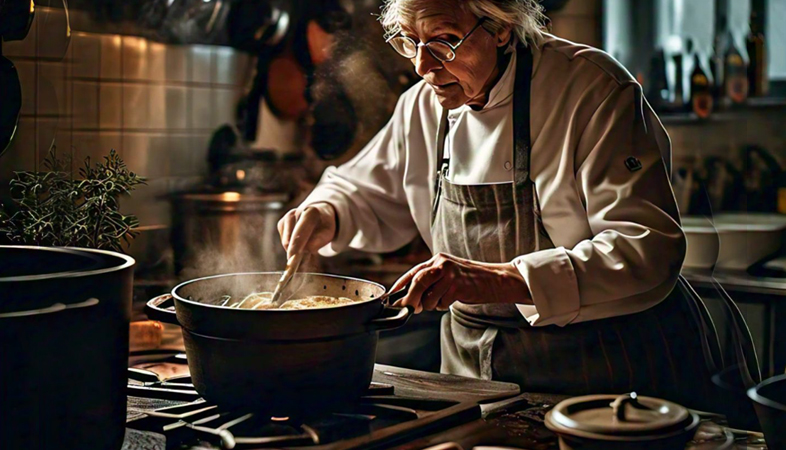Bakery Innovation: Pushing the Boundaries of Flavor and Design in Bread Making
Bakers are constantly experimenting with new ingredients, techniques, and presentations to craft unique bread experiences that delight and surprise customers.
In the world of bakery innovation, pushing the boundaries of
flavor and design in bread making is an exciting journey that blends tradition
with creativity. Bakers are constantly experimenting with new ingredients,
techniques, and presentations to craft unique bread experiences that delight
and surprise customers. Here’s a look at how the boundaries of flavor and
design are being expanded in contemporary bread making.
One of the most significant areas of innovation in bread making is the exploration of new and unexpected flavors. Traditional bread recipes often stick to familiar ingredients like wheat flour, yeast, and salt. However, modern bakers are incorporating a wide variety of alternative flours, such as spelt, rye, and ancient grains like teff and amaranth, which not only add nutritional value but also introduce unique flavors and textures.
In addition to alternative flours, the use of diverse ingredients such as herbs, spices, fruits, and vegetables is becoming increasingly popular. Adding ingredients like roasted garlic, sundried tomatoes, olives, and fresh herbs can transform a simple loaf into a gourmet delight. Sweet breads are also evolving, with flavors like lavender honey, matcha, and dark chocolate becoming more common. These combinations not only create new taste experiences but also cater to the growing demand for artisanal and specialty breads.
Fermentation techniques are another area where bakers are pushing the boundaries. Traditional sourdough bread, with its complex flavor profile and health benefits, has seen a resurgence in popularity. Bakers are experimenting with different types of starters, fermentation times, and hydration levels to develop distinctive sourdough flavors. Wild fermentation, which relies on natural yeasts and bacteria from the environment, is also being explored for its ability to produce unique and highly individualized breads.
Innovative baking techniques are enhancing both the flavor and texture of bread. High-hydration doughs, which contain more water than traditional doughs, can produce a bread with a more open crumb structure and a chewy texture. Techniques such as cold fermentation, where the dough is allowed to ferment slowly in the refrigerator, can develop deeper flavors and improve the dough’s handling properties. These methods require skill and patience but result in bread that stands out from the conventional loaves.
In terms of design, bakers are becoming increasingly creative with the appearance of their breads. Decorative scoring, where the surface of the dough is slashed with intricate patterns before baking, is a popular technique that adds an artistic element to the bread. These patterns can range from simple lines to elaborate designs, making each loaf a work of art. The use of stencils and dusting the dough with flour or seeds can further enhance the visual appeal.
Colorful breads are also gaining traction, thanks to the use of natural colorants such as activated charcoal, beetroot powder, turmeric, and spirulina. These ingredients not only add vibrant colors but also introduce additional health benefits. Multicolored doughs can be twisted or braided together to create striking patterns that catch the eye and entice customers.
Shaping techniques are another avenue for innovation. Traditional shapes like baguettes and boules are being complemented by more unconventional forms such as braids, twists, and knotted rolls. Pull-apart breads, which are designed to be shared and enjoyed communally, are also becoming popular. These visually appealing shapes can make the bread more attractive and engaging for customers.
Bakers are also exploring the cultural and historical aspects of bread making, reviving ancient recipes and techniques from around the world. This not only introduces customers to new flavors and textures but also connects them with the rich heritage of bread making. For instance, traditional breads like Japanese shokupan (milk bread), Italian ciabatta, and Middle Eastern flatbreads are being reinterpreted with modern twists.
Sustainability is another important factor driving innovation in bread making. Bakers are increasingly focusing on sourcing local and organic ingredients, reducing waste, and adopting eco-friendly packaging. The use of heritage grains, which are often more resilient and require fewer inputs than modern wheat varieties, supports biodiversity and promotes sustainable agriculture.
In conclusion, bakery innovation in bread making is a dynamic field that combines creativity, tradition, and sustainability. By experimenting with new flavors, techniques, and designs, bakers are pushing the boundaries of what bread can be. Whether it’s through the use of alternative ingredients, innovative fermentation methods, artistic scoring, or sustainable practices, these pioneers are transforming bread into a culinary art form that continues to evolve and inspire.
.png)





























